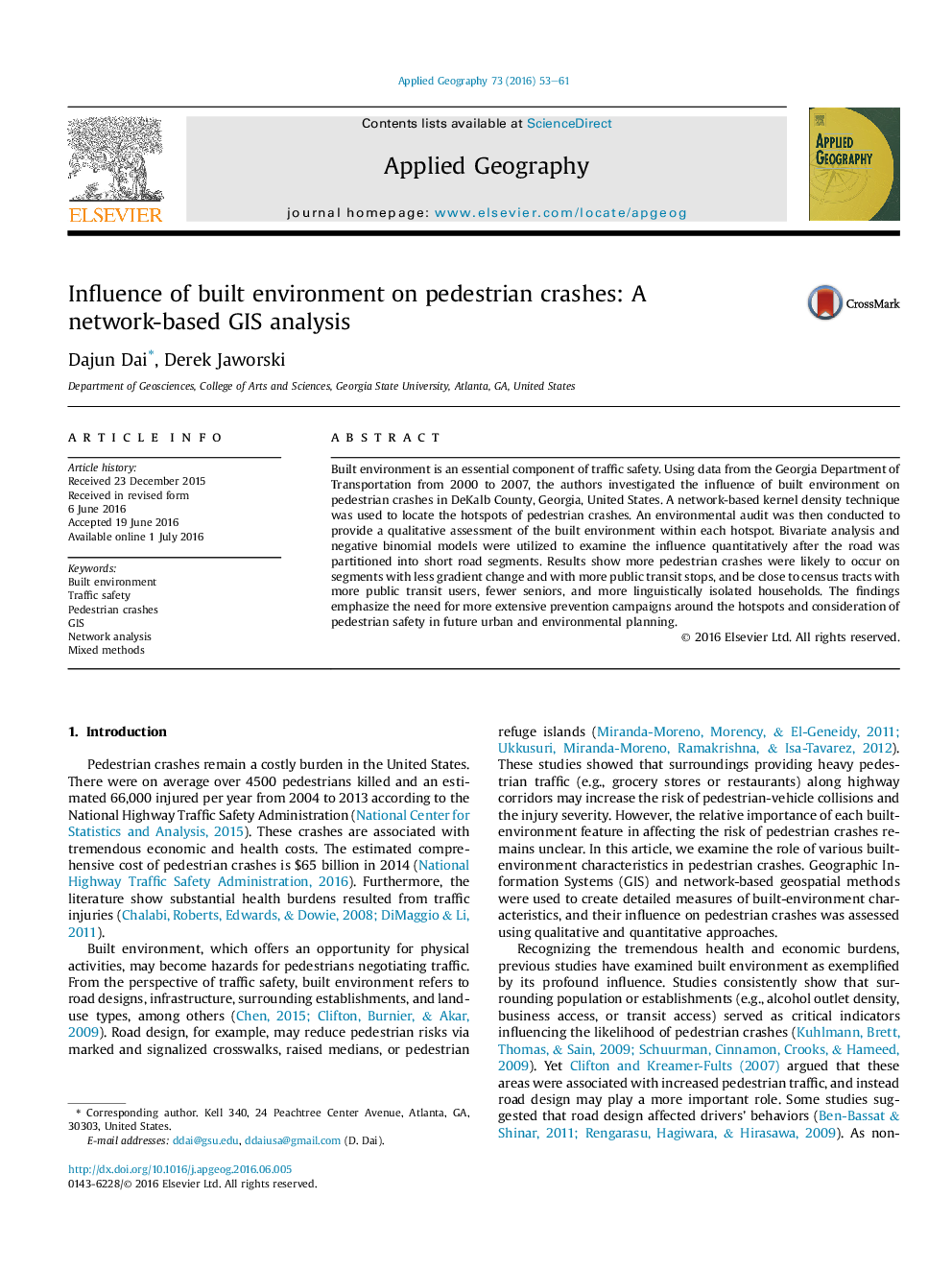| کد مقاله | کد نشریه | سال انتشار | مقاله انگلیسی | نسخه تمام متن |
|---|---|---|---|---|
| 83131 | 158688 | 2016 | 9 صفحه PDF | دانلود رایگان |
• Pedestrian crashes were evaluated using network-based spatial techniques.
• Built environment audit was conducted within hotspots.
• Negative binomial test was used to assess the influence of built environment.
• Road gradient change, but not curvature, is protective to pedestrians.
• Population density and using public transits to work are predictors of crashes.
Built environment is an essential component of traffic safety. Using data from the Georgia Department of Transportation from 2000 to 2007, the authors investigated the influence of built environment on pedestrian crashes in DeKalb County, Georgia, United States. A network-based kernel density technique was used to locate the hotspots of pedestrian crashes. An environmental audit was then conducted to provide a qualitative assessment of the built environment within each hotspot. Bivariate analysis and negative binomial models were utilized to examine the influence quantitatively after the road was partitioned into short road segments. Results show more pedestrian crashes were likely to occur on segments with less gradient change and with more public transit stops, and be close to census tracts with more public transit users, fewer seniors, and more linguistically isolated households. The findings emphasize the need for more extensive prevention campaigns around the hotspots and consideration of pedestrian safety in future urban and environmental planning.
Journal: Applied Geography - Volume 73, August 2016, Pages 53–61
